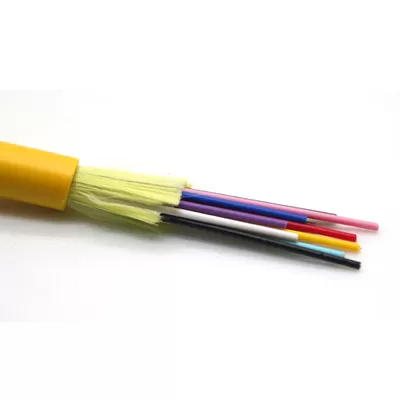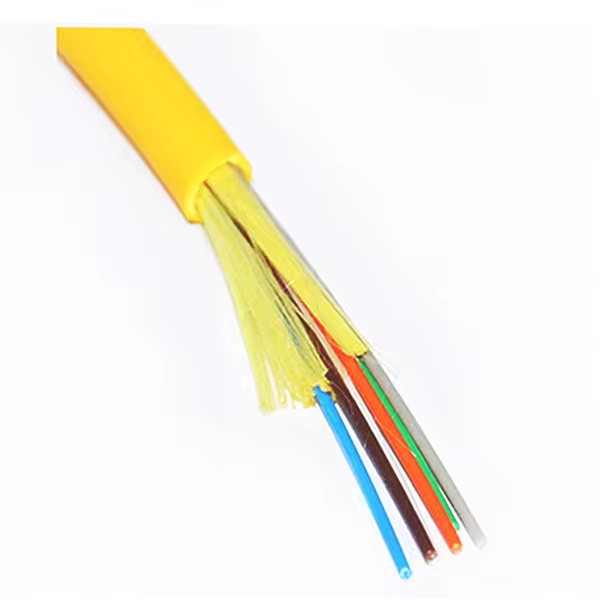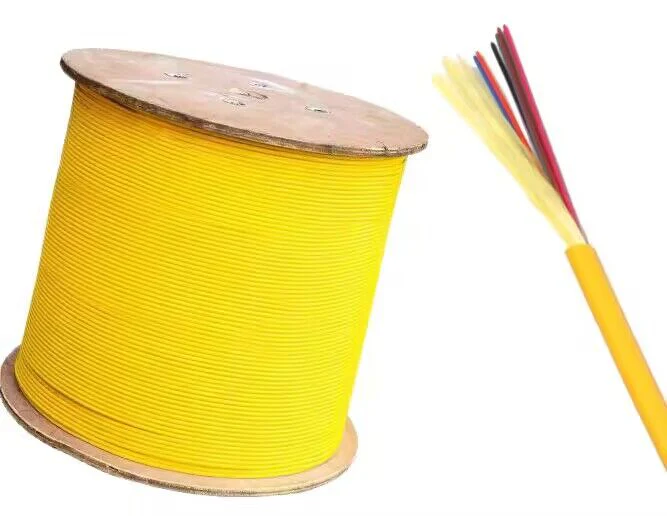Understanding Single Mode Fiber Optic Cables for FTTH

FTTH Overview
Importance of Single Mode Fiber Optic Cables
FTTH, also known as Fiber to the Home, revolutionizes the way high-speed internet, television, and telephone services are delivered directly to residences.
Single mode fiber optic cables are pivotal in enabling this technology, providing the necessary high bandwidth and long-distance transmission capabilities for seamless connectivity and communication.
Advantages of Single Mode
High Bandwidth
Single mode cables, known for their slender core and single transmission mode, offer high bandwidth capabilities that enable faster data transmission for FTTH services. This means that users can enjoy seamless high-speed internet connections and high-quality video streaming without interruptions.
The high bandwidth of single mode fibers is a crucial advantage in FTTH applications, as it ensures that the increasing demand for data-intensive services can be met efficiently.
Long-Distance Transmission
One of the key benefits of single mode fibers is their ability to transmit data over long distances without experiencing signal degradation. This characteristic makes them ideal for connecting homes to central network hubs in FTTH installations, ensuring that residents receive reliable and high-quality connectivity regardless of the distance from the service provider.
The long-distance transmission capabilities of single mode fibers make them a preferred choice for FTTH deployments, as they provide consistent and stable connectivity even over extended distances.
FTTH Installation
Fiber Cable Routing
When it comes to FTTH installation, proper fiber cable routing is a critical aspect that directly impacts the efficiency and performance of the network. Careful planning and execution of the routing process are essential to minimize signal loss and maintenance issues.
Effective fiber cable routing involves determining the optimal pathways for the fiber optic cables, ensuring that they are protected from potential physical damage or environmental factors. This includes strategically mapping out the routes within residential areas and connecting them to central network hubs. By doing so, signal integrity is preserved, and the risk of service disruptions due to cable damage is significantly reduced.
Furthermore, meticulous attention to detail during the fiber cable routing process ensures that future maintenance activities can be carried out with ease. Properly organized and labeled fiber cables streamline troubleshooting procedures, allowing technicians to quickly identify specific connections or segments when addressing any issues.
In essence, prioritizing precise fiber cable routing during FTTH installations is fundamental for maintaining a robust and reliable network infrastructure for delivering high-speed internet, television, and telephone services to residences.

Splicing and Termination
The process of splicing and termination plays a pivotal role in establishing reliable connections for single mode fibers in FTTH installations. Precise splicing techniques involve joining individual fiber strands together using specialized equipment to ensure minimal signal loss at connection points.
Equally important is the termination process, which involves securely connecting the fibers to their respective components within the network infrastructure. This step demands meticulous attention to detail to guarantee optimal performance and reliability of the connections.
By adhering to best practices in splicing techniques and termination procedures, service providers can ensure that single mode fibers are seamlessly integrated into the FTTH network with minimal signal loss or degradation. This results in consistent high-speed internet, television, and telephone services for residential subscribers.
Single Mode vs Multimode
When comparing single mode and multimode fibers for FTTH applications, it's essential to consider their capabilities in terms of bandwidth, distance, and cost.
Bandwidth and Distance
Single mode fibers excel in offering higher bandwidth and longer transmission distances compared to multimode fibers. Their ability to carry signals over extended distances without losing strength makes them the optimal choice for FTTH applications requiring high-speed and long-distance connectivity. This ensures that residents can enjoy seamless connectivity regardless of their distance from the network hub.
Cost Considerations
While it's true that single mode fibers may have higher initial costs compared to multimode fibers, their long-term benefits make them a preferred choice for FTTH deployments. The superior performance and longevity of single mode fibers outweigh the initial investment, providing a reliable and future-proof solution for delivering high-speed internet, television, and telephone services to residences.
Relevance in FTTH
In the context of Fiber to the Home (FTTH) technology, single mode fiber optic cables play a crucial role in ensuring future-proof connectivity and addressing the increasing demand for high-bandwidth services.

Future-Proof Technology
Single mode fibers are recognized as a future-proof technology, capable of meeting the escalating bandwidth requirements of evolving FTTH services. Their ability to accommodate higher data transmission rates positions them as a reliable solution for addressing the ever-growing demands of residential subscribers.
Investing in single mode fibers ensures readiness for future technological advancements, providing a robust foundation for delivering high-speed internet, television, and telephone services to homes. This future-proof characteristic makes them an essential component in the development of sustainable and forward-looking FTTH networks.
Market Adoption
The surging adoption of high-bandwidth applications and services is driving the demand for single mode fiber optic cables in FTTH deployments. As more households seek seamless connectivity for advanced services such as 4K video streaming, online gaming, and smart home devices, there is a growing reliance on single mode fibers to deliver these capabilities efficiently.
This trend underscores the relevance and importance of single mode fibers in the FTTH market. Service providers are increasingly turning to these advanced fibers to meet consumer expectations for high-speed and reliable internet, television, and telephone services at their residences.
By embracing future-proof technology like single mode fiber optic cables and recognizing their significance in the current market landscape, stakeholders can ensure that FTTH networks are well-equipped to meet the evolving needs of residential subscribers.
FTTH Summary
In conclusion, the integration of single mode fiber optic cables is indispensable for delivering high-speed internet, television, and telephone services to homes through FTTH technology. Understanding the advantages and relevance of single mode fibers is crucial for successful FTTH installations and future-proofing network infrastructure. By leveraging the high bandwidth capabilities of single mode fibers, residential subscribers can enjoy seamless connectivity and access to advanced services. This underscores the pivotal role of single mode fibers in shaping the modern landscape of high-speed internet and robust network infrastructure.
See Also
Exploring the Differences Between Single Jacket and Dual Jacket Outdoor Optical Cables
2024 Comparison of FBT vs PLC Splitters: Signal Distribution Performance
Unveiling the Wonders of Preconnectorized Cables for Indoor and Outdoor Cable Structure
About US
Follow Us
AnetFiber company's main products are indoor and outdoor optical fiber cables, outdoor waterproof pre-connected fiber-to-the-home products, PLC optical fiber splitters, optical fiber jumpers and pigtails, MTP®/MPO high-density big data product solutions, optical fiber field quick connectors and research and development molding, injection molding and production of optical fiber distribution boxes, optical fiber chassis cabinets, the market has expanded to the world, Europe, America, Asia, the Middle East and Latin America.
Address
Shenzhen City, Baoan District, Yanluo Street, Tangxiayong Community, Yangyong Industrial Road, Tonggangda New Energy Vehicle Park 406
Contacts
+86 199 2655 3586

